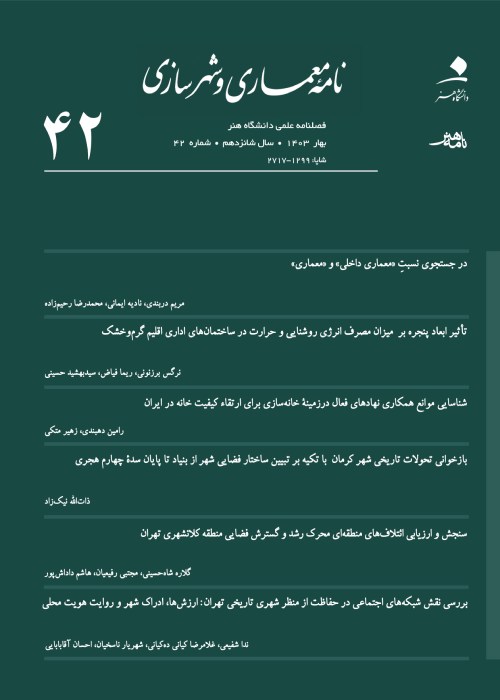Pneumatic Structures
Author(s):
Abstract:
Knowing different kinds of structural systems is among the necessities and prime needs for students, architects and civil engineers. The variety of structural designs and construction methods, and access to the new technologies could help architects to create modern as wall as beneficial buildings. One of the most special types of structures, which is suitable for constructing temporary buildings (that must be built as fast as possible), is pneumatic structures. After designing and building such structures, they could be easily transferred to different places and immediately aired. Therefore, they can be used many times in several cases. The most familiar inflated membrane structures are airships, from non-rigid blimps to giant vessels such as the proposed 1,300-foot-long (307-meter) ATC SkyCat cargo lifter with a payload of 2,200 tons. The new technology had consequences in the building industry. The English aeronautical engineer, Frederick W. Lanchester, first proposed an air-supported structure in 1917. Immediately after the World War II, Walter Bird designed and built prototypes of pneumatic domes to house large radar antennaefor the U.S. Air Force, known as radomes. They included many civilian commercial applications and paved the way for a new kind of architecture. Pneumatic or air-supported structures have their form sustained by creating, with the aid of fans, an air pressure differential between the interior of the building and outside atmospheric conditions. The increased air pressure-about the difference between the lobby of high-rise building and the top floor-is as slight as to be virtually undetectable and the causes are no discomfort. The structural system enables achieving large spans without columns and beams, providing totally flexible interior spaces. Made from laminated membranes such as fiber glass, nylon, or polyester, coated with polyvinyl chloride (PVC) for weather protection, the electronically welded components are tailored to define the building shapes. The durability and heat -and light- filtering properties of the membraneare determined by careful choice of surface finishes and inner lining. Because of its lightness, the air-supported structure in among the most efficient structural forms, combining high-tensile strength materialswith the shell form. In this article, the authors intend to discuss the different capabilities and forms of the two categories Compact Air Structures: Air-supported structures; and Air-Inflated ones. The loads which affect these structures are: dead live and air pressure loads, which will be discussed thoroughly, and the construction methods of these structures have been stated. In other parts, “entrances”, “pressure drop control “, “expenses through operation period” and “designing relying points and supports” have been explained. Air-inflated structures are devised into major groups of inflated panel structures and inflated frame structures. In the structural-seismic part of the article, the different types of air structures in terms of forces and geometric shapes, their strong point against earthquake and lateral forces have been discussed. At the end some real examples of these structure systems have been illustrated. The conclusion of the article includes advantages and disadvantages and usage of the air structures compare to other types of structures. All effort has been made to use different sources such as books and articles (published in this field since 70s) and the data from different companies (Iranian and non-Iranian), the professional ones in the mentioned field.
Keywords:
Language:
Persian
Published:
Journal of Architecture and Urban Planning, Volume:4 Issue: 7, 2012
Page:
67
magiran.com/p1161654
دانلود و مطالعه متن این مقاله با یکی از روشهای زیر امکان پذیر است:
اشتراک شخصی
با عضویت و پرداخت آنلاین حق اشتراک یکساله به مبلغ 1,390,000ريال میتوانید 70 عنوان مطلب دانلود کنید!
اشتراک سازمانی
به کتابخانه دانشگاه یا محل کار خود پیشنهاد کنید تا اشتراک سازمانی این پایگاه را برای دسترسی نامحدود همه کاربران به متن مطالب تهیه نمایند!
توجه!
- حق عضویت دریافتی صرف حمایت از نشریات عضو و نگهداری، تکمیل و توسعه مگیران میشود.
- پرداخت حق اشتراک و دانلود مقالات اجازه بازنشر آن در سایر رسانههای چاپی و دیجیتال را به کاربر نمیدهد.
In order to view content subscription is required
Personal subscription
Subscribe magiran.com for 70 € euros via PayPal and download 70 articles during a year.
Organization subscription
Please contact us to subscribe your university or library for unlimited access!



